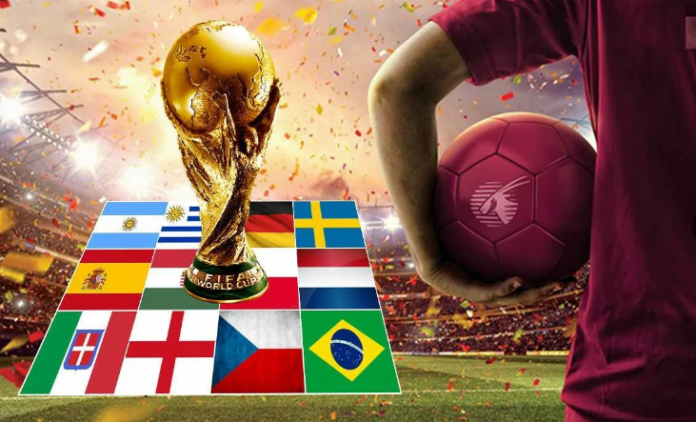Introduction:
The FIFA World Cup is a global phenomenon that captivates billions of football fans on a regular basis. Going through the energy of the matches themselves, understanding the standings is important to measure the progress of the groups and anticipate the outcome of the competition. In this comprehensive examination, we dive into the multifaceted nuances of the FIFA World Cup standings, analyzing the top-performing groups and revealing the variables of their prosperity.
Explaining the FIFA World Cup Standings:
Understanding the FIFA World Cup standings is fundamental to understanding the direction of the competition and distinguishing strong rivals. The standings operate within an organized structure of group stages, where groups focus on match results. A win yields three focuses, a draw yields one, and unfortunately none, with objective contrasts such as sudden-death rounds used for positioning equations. Getting a handle on this framework illuminates the ongoing complexities of standing, in which groups operate their collectives and impart knowledge in their exhibitions. This perception serves as a basis for analyzing standings and showing which groups dominate the world stage.
Explanation of points system

To understand the FIFA World Cup standings, it is fundamental to get a handle on the focus framework. The outcome of each match, be it success, draw, or misfortune, indicates indisputable points — three foci for success, one for draw, and none for misfortune.This straightforward system serves as the foundation for ranking teams within their respective groups. However, it’s essential to recognize that tie-breaking criteria, such as goal difference and goals scored, come into play in determining standings in the event of teams sharing equal points.
Current Standings Analysis
In the current standings analysis section “Breaking down the FIFA World Cup standings: Who’s on top?” We take a look at the dynamics of the ongoing tournament. Focusing on the top-performing teams in each group, we dissect their strategies, strengths, and weaknesses. Teams such as Brazil, Germany and Argentina focus on showing their dominance on the world stage. By examining their performance and match results, we gain valuable insight into their positions and potential paths to success. This analysis provides a comprehensive snapshot of the tournament’s progress, highlighting the teams vying for the coveted top spots.
Review of the top teams in each group
In surveying the top groups in each FIFA World Cup gathering, it is fundamental to thoroughly evaluate their performances. These groups address the best in their respective gatherings, demonstrating their ability, discipline and assurance in the field. By critically examining their matches and results, we gain a greater understanding of their assets, weaknesses and the competition as expected. This survey fills in as a quick starting point to gauge the cut-throat scene and gauge the direction of the standings as the competition progresses.
Factors Contributing to Success

When pursuing success within the FIFA World Cup standings, the human component assumes a central part. It is the unrelenting determination, skill and strength of the players that propels their groups to the top of the standings. A group that thrives on trust and camaraderie between partners encourages an environment where every player thrives. In addition, the direction and critical choices made by leaders and chiefs are essential to steering groups to victory. The enthusiasm and confidence shown by the players and coaching staff is the main thrust behind this success at the most spectacular stage of football. Ultimately, the human spirit and collective effort propel the teams to the top of the FIFA World Cup standings, making the competition account and enthralling fans around the world.
Emerging Contenders:
Often commanding consideration when sorting out football’s monsters, the FIFA World Cup is also revered for the unexpected surprises and rivalries it creates. Groups that were once seen as dark horses can surprise everyone and move up the standings with spectacular displays of skill and assurance. Dissecting the exposures of these emerging competitors reveals insights into the evolving competitive landscape.
Potential Upsets and Surprises:
The “Potential Bombshells and Amazements” section of the FIFA World Cup Standings investigation centers around the undeniably passionate eccentricity that defines the competition. It explores the potential for dark horse groups to challenge assumptions and upset highly placed rivals, reshaping the standings each time. By analyzing past examples of upsets and distinguishing potential long-shot rivals in the ongoing competition, this segment offers experiences of the exciting turn of the road that can come on football’s grandest stage.
Conclusion:
In conclusion, breaking down the FIFA World Cup standings provides invaluable insights into the tournament’s dynamics and outcomes. By analyzing the performances of top teams, emerging contenders, and potential upsets, we gain a deeper understanding of the intricate web of factors shaping the standings. As the tournament progresses, the race for the top spot intensifies, promising thrilling encounters and unforgettable moments on the road to glory.
Frequently Asked Questions (FAQs)
Q1: Which country won FIFA World Cup 2022?
Ans: The winner of the FIFA World Cup 2022 was France.
Q2: What is FIFA full name?
Ans: FIFA’s full name is the Fédération Internationale de Football Association, which translates to the International Federation of Association Football in English.
Q3: Who made FIFA?
Ans: FIFA, the international governing body for football, was founded in 1904 by representatives from seven European countries: Belgium, Denmark, France, Netherlands, Spain, Sweden, and Switzerland.
Q4: How many countries play FIFA?
Ans: 211 countries are members of FIFA, the international governing body for football. These countries participate in various FIFA tournaments and competitions, showcasing the global reach and popularity of the sport.



